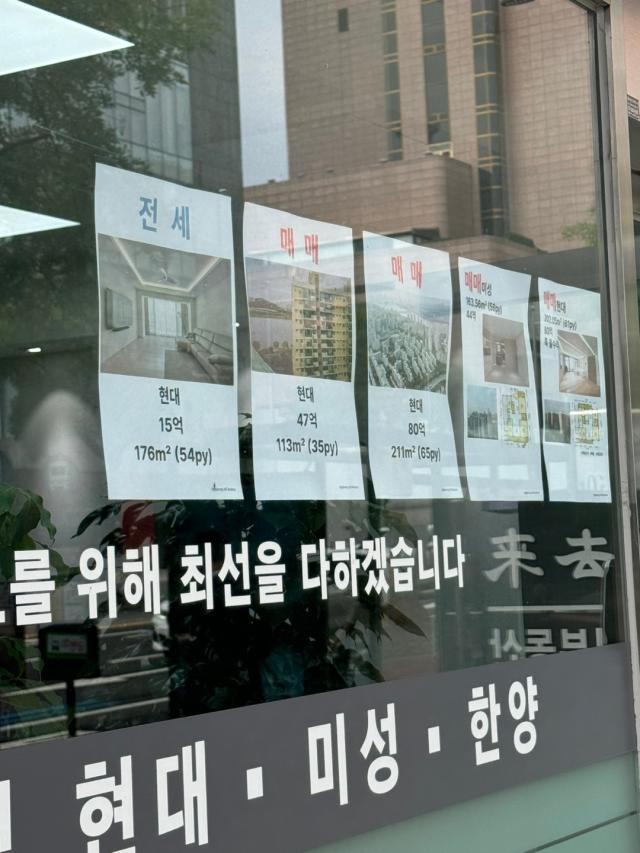
Gangnam, with its outstanding infrastructure and high-quality amenities that integrate business, education, and culture, has indeed become a coveted place to live, not only for status-conscious Koreans but also for many others, seeing a steady influx of newcomers eager to keep up with the Joneses.
Statistics provide a clearer picture of this. According to data compiled by the Ministry of the Interior, the three wealthy districts of Gangnam, Seocho and Songpa that make up greater Gangnam, just south of the Han River, were among the few of Seoul's 25 districts that saw an increase in resident numbers.
As of January this year, Gangnam's population stood at 541,986, up a whopping 20,533 residents from a year ago. Similarly, Seocho also saw an increase of about 3,000 new residents during the same period. These figures are quite impressive, considering that nearly all the districts, north of the Han River, experienced a decline in resident numbers, with only Jung, Dongdaemun, and Eunpyeong showing slight increases.

The primary draw for the influx can be attributed to the heavy concentration of elite schools and private crammers offering excellent tutoring and consultation services. It is no longer a secret that most Korean parents are willing to spend an arm and a leg on education if it means their children can secure a spot at a top university, which would lead to decent jobs at conglomerates after graduation.
For this reason, parents with high incomes flock to Gangnam to send their kids to elite schools and private crammers. For example, Daechi-dong in Gangnam is a neighborhood clustered with top-tier crammers that help tiger moms stay abreast of the latest information regarding schools and college entrance exams.
They cater to the anxieties of students aiming for admission to prestigious universities, prompting their well-off parents to turn to them when public education fails to meet their expectations.

Another appealing aspect of Gangnam lies in its sophisticated vibe, characterized by trendy restaurants, upscale boutiques, and vibrant nightlife. For example, spacious shopping malls like Starfield COEX Mall in Samseong-dong and high-end department stores in Apgujeong-dong have solidified the area's reputation as a wealthy neighborhood.
Shinsegae Department Store in Gangnam, famous for luxury labels and high-end goods, became the most profitable branch, generating the highest revenues of any mall in Korea last year. One conspicuous consumer in her 50s from the neighborhood said, "The store carries premium products and high-quality items faster than anywhere else. I'm so happy living in this environment."
A slew of major new development projects are also in the pipeline, including the retail giant's another department store in Suseo-dong set to be built by 2029 and a multi-purpose facility with a domed stadium in Jamsil-dong slated for completion by 2031. Automotive giant Hyundai Motor's new headquarters, currently under construction, in Samseong-dong is also expected to fundamentally alter the skyline of the area as Korea's tallest skyscraper with an opulent shopping complex, further cementing Gangnam's appeal.

One realtor in Apgujeong-dong said, "Many residents here take pride in living in Seoul's most affluent area, often expressing themselves through flashy cars, designer handbags, or luxury jewelry to show off their ostentatious wealth or lavish lifestyle to others."
One young super-rich in his 30s brazenly said, "It's not about schools since I plan to send my future kids to study abroad. What really matters is the sense of exclusivity that comes with living here."
"Gangnam's popularity lies in its well-established infrastructure, which combines workplaces, residential areas, and abundant leisure and dining options," said Jeon Young-soo, a professor at Hanyang University. "Those born in Gangnam tend to stay, while outsiders aspire to move in." He added, "But I don't see this phenomenon as a big problem. It's natural for people to want to live in such an area, and Gangnam is expected to continue thriving as this trend of concentration seems unstoppable."
Copyright ⓒ Aju Press All rights reserved.





View more comments